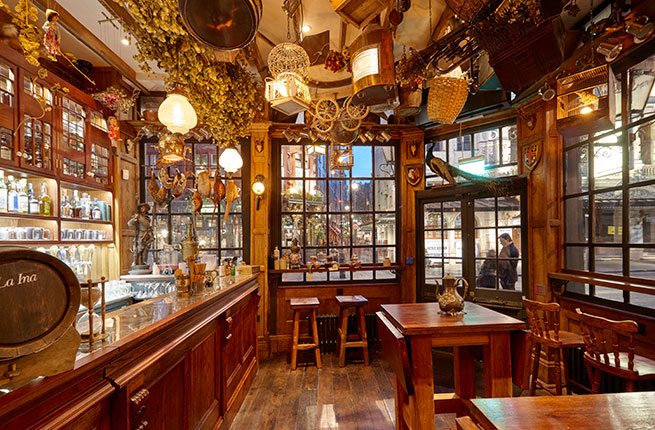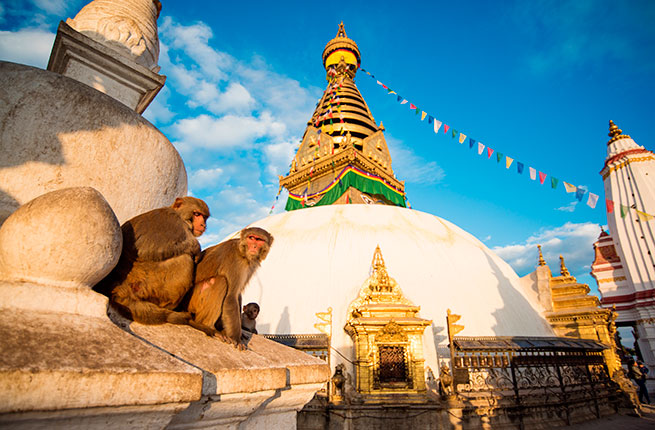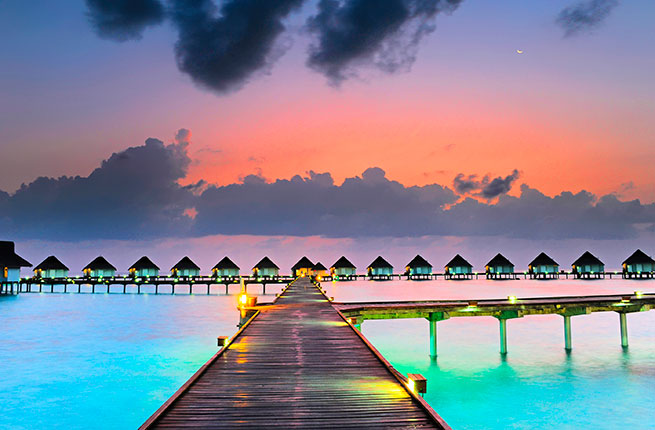Georgia is so far off the tourist track that if you mention you’re headed there, you’ll probably get an earful on peaches and Savannah, not the tiny country sandwiched between Europe and Asia that shares the same name. But now more than ever, in-the-know travelers are buzzing about its many unsung attractions: glaciated peaks that dwarf the Alps, mysterious cave cities hewn into mountainsides and amber wines that the world’s top sommeliers can’t stop talking about. To seal the deal, Georgia is affordable these days — half-the-price-of-Europe affordable — which means there’s no better time to catch a flight to the Caucasus. Breathtaking mountains
Although Georgia is smaller than South Carolina, four of Europe’s 10 tallest mountains can be found there, and on a clear day, you can see snowy peaks from almost anywhere in the country. Well-marked trails and affordable mountaineering packages draw alpinists, both amateur and expert, from around the world. But you don’t need to lace up your hiking boots to make the most of the Caucasus. Consider galloping on horseback through mountain passes atZeta Camp, hiking to Chaladi Glacier in Mestia,whitewater raftingin Borjomi, or off-road driving in Tusheti withInter Georgia Travel. RELATED: Where to eat like the Romans in Italy East-meets-West cuisine
For centuries, Georgia occupied a strategic location along the Silk Road that linked China to the Mediterranean, and as merchants passed through the Caucasus, Georgia’s culinary repertoire broadened to adopt new ingredients and techniques from both continents. Most meals start with a Mediterranean-style cucumber and tomato salad drizzled with oil. But then the pendulum might swing east with a dish likekhinkali, soup dumplings with fenugreek-spiced filling. Then India might spring to mind as you tear off a piece ofshotis puri, anaan-like bread baked to chewy perfection on the walls of a tandoor. But certain flavors are unmistakably Georgian, like walnut-thickened stews; grassysulgunicheese; or puckeringtkemali, an addictive plum compote that’s an ideal counterpoint to grilled meats. Polyphonic folk music
Complex harmonies are not reserved for concert halls in Georgia; you’re just as likely to hear a spellbinding performance around a dinner table. These polyphonic folk songs can be lively or somber, depending on the mood, but the stories they tell chronicle the nation’s precious oral history from pre-Christian times to the present. There’s a terrific little ensemble called Zedashe that’s worth seeking out; if theirtour datesdon’t align with your schedule, they sometimes have impromptu jam sessions atPheasant’s Tearswinery in Sighnaghi. Seaside towns
Georgia may be known for its soaring peaks, but the oft-overlooked Black Sea coast is worth adding to the itinerary, particularly when it’s warm outside and the bars along the rocky beaches come to life. Batumi, the country’s most popular resort, is the Las Vegas of Georgia — all neon lights, casinos and nightclubs. Tranquility is easier to find farther north in villages like Grigoleti, whose beaches of fine magnetic sand are said to be therapeutic for the bones and joints. Prehistoric cave cities
Georgia is home to three major cave complexes: Uplistsikhe, Davit Gareja and Vardzia. The oldest, and closest to Tbilisi, is Uplistsikhe, dating back to the early Iron Age. Its twisty, irregular rock formations call to mind Gaudí’s Naturalist works. Farther east, the still-active Davit Gareja monastery complex, with its colorful frescoes and desert views into neighboring Azerbaijan, is a more enriching experience, provided you have the better part of a day to spare (theGareji Lineis the most comfortable way to travel there). Vardzia lies even farther afield, but its labyrinthine network of 235 chambers — which inspired the Georgian literary masterpiece “The Knight in the Panther’s Skin”—are awe-inspiring. RELATED: Zoos where you can spend the night
Whirlwind dances
Focus on a Georgian dancer’s legs as he’s performing, and you may notice an unexpected adornment: kneepads. They come in handy in theMtiulurimountain dances that require the men to jump into the air, twirl around, and land squarely on their knees. Equally spectacular are the etherealKartulinumbers, in which a female dancer glides across the stage in a large, billowy dress, creating the illusion of hovering.Sukhishvili National Balletis the country’s premier dance company, but if they’re out of town (they usually are), don’t fret: the choreography on display atTsiskvili, a fine-dining restaurant on the outskirts of the capital, will keep you transfixed for an entire evening. World-class museums
In 1991, a group of archaeologists excavating Dmanisi, in southern Georgia, uncovered the oldest human remains found in Eurasia to date. You can see the “1.8-million-year-old girl” at theGeorgian National Museumin Tbilisi as part of the permanent collection, which also includes a treasure trove of prehistoric jewelry and a thought-provoking exhibition on the Soviet occupation. For those who are especially curious about the latter, the Stalin Museum in Gori — his birthplace — offers excellent guided tours through immense collections of Communist-era paraphernalia, including Stalin’s armored railway carriage. Fantastic skiing
Georgia is one of the world’s best bargains when it comes to skiing and snowboarding. Altitudes here surpass those of the Alps, but at about $12 per day, lift tickets are a fraction of what you might pay Stateside or in Europe. There are six ski resorts in Georgia butGudauri, located two hours north of Tbilisi, eclipses the competition with 35 miles of slopes to traverse. Their heli-ski tours, suitable for only the most intrepid athletes, give skiers the rare opportunity to barrel down a virgin mountainside from 13,000 feet. For the rest of Georgia’s charms, like an epic feast with wine drunk from a ram’s horn, visit Fodor’s.

















